This Vegan Buko Pie is my absolute favorite Filipino treat that I'm so excited to share with you! If you've never had buko (young coconut) before, you're in for a real treat. This pie is nothing like those super sweet coconut cream pies, it's all about letting that fresh, delicate coconut flavor shine through.
My dad grew up in Laguna, Philippines, where these pies are legendary, and this recipe brings those authentic flavors right to your kitchen. The filling is incredibly simple but so satisfying - tender chunks of young coconut in a lightly thickened custard made from its own juice.
And that flaky vegan crust? Perfection! Trust me, once you make this, it'll become your new go-to dessert for impressing friends and family.
What is Buko Pie?
Buko Pie is a beloved Filipino dessert originating from the Laguna province in the Philippines. "Buko" means young coconut in Tagalog, and this pie showcases both the tender meat and sweet juice of young coconuts in a custard-like filling encased in a flaky crust.
Unlike American coconut cream pies that use sweetened shredded coconut, Buko Pie celebrates the pure, clean flavor of fresh young coconut. In the Philippines, roadside stands and family-owned bakeries in Laguna are famous for their Buko Pies, making them a must-buy treat for travelers and a cherished part of Filipino food culture.
This vegan version honors the authentic flavor profile while making it accessible to those following a plant-based lifestyle.
Jump to:
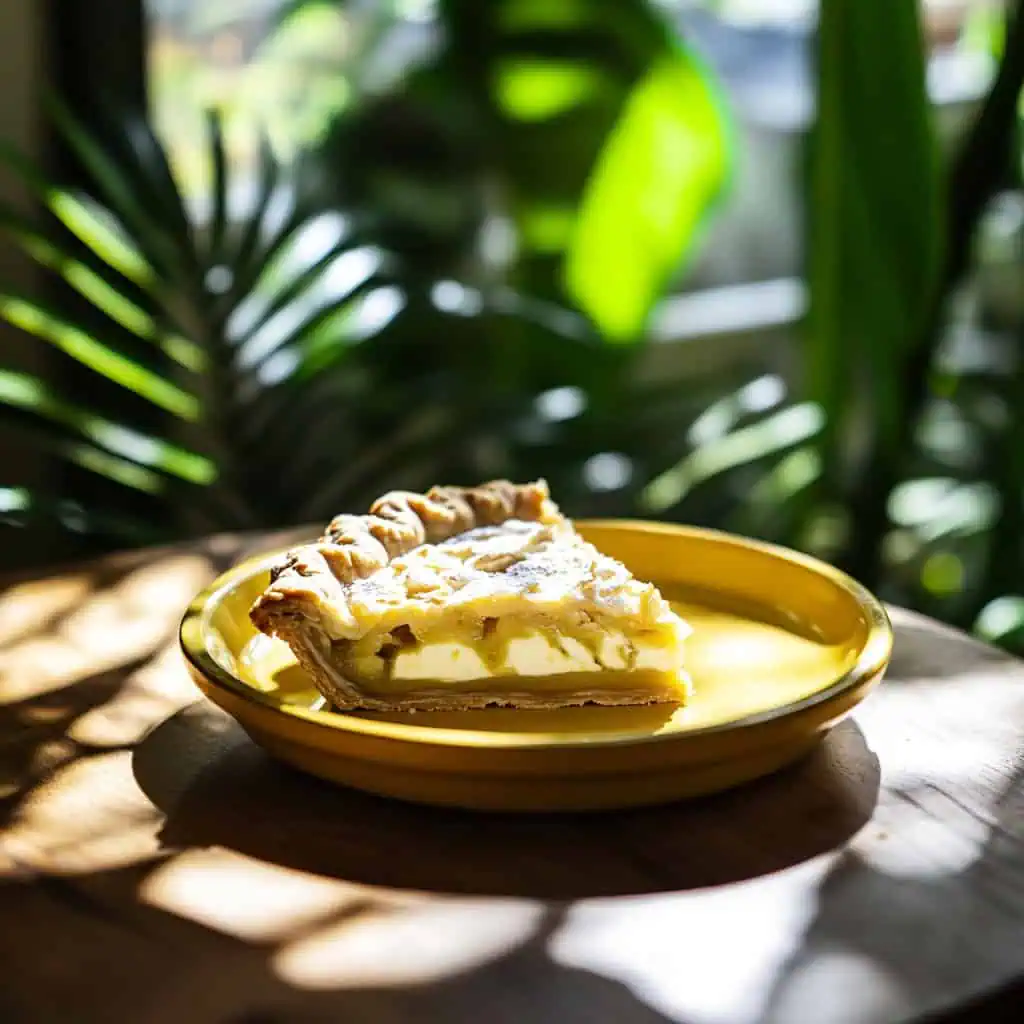
Why You'll Love This Recipe
- Authentically Filipino - This recipe stays true to the traditional flavors of Laguna's famous buko pies
- Purely Coconut - Unlike commercial versions, this pie lets the natural coconut flavor shine through
- Vegan-Friendly - A plant-based adaptation that doesn't compromise on taste or texture
- Perfectly Balanced - Not overly sweet, allowing the delicate coconut flavor to be the star
- Make-Ahead Friendly - Can be prepared in advance and frozen until ready to bake
- Customizable - Several variations are provided to suit your taste preferences
Ingredients
The ingredients in this vegan Buko Pie are carefully selected to create an authentic Filipino experience while keeping it plant-based. Young coconut is the star, providing both the delicate meat and natural sweet juice that defines traditional buko pie.
Arrowroot powder serves as a vegan-friendly thickener that creates a clear, glossy filling without the eggs used in conventional recipes. The minimal sugar allows the coconut's natural sweetness to shine through, staying true to the Laguna province's famous pies.
Cold vegan butter and apple cider vinegar in the crust ensure flakiness and tenderness without dairy products, while the simple almond milk and maple syrup glaze adds a beautiful golden finish that's not overly sweet.
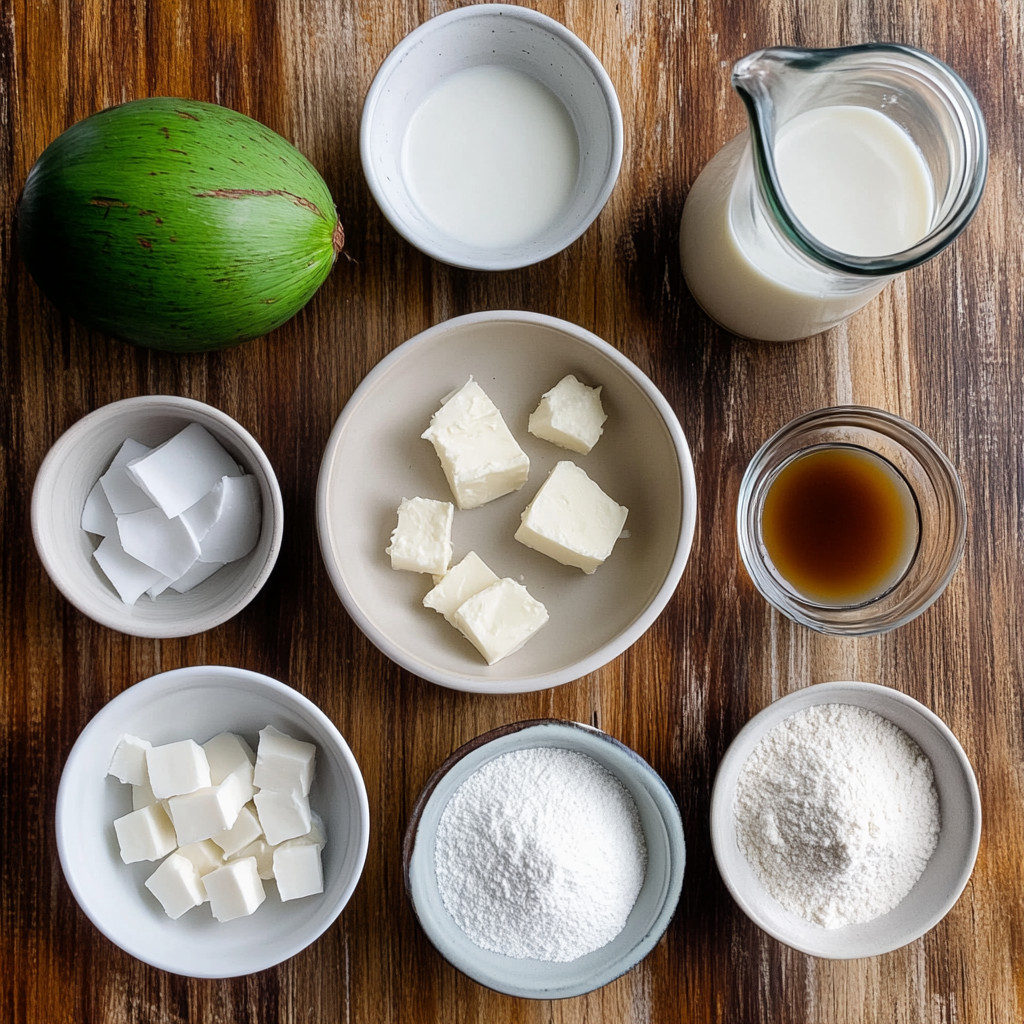
For the Filling:
- 2 whole young coconuts (yielding approximately 2 cups of meat and 1½ cups of juice)
- 4 tablespoons arrowroot powder
- 1 tablespoon vanilla paste or 1½ teaspoons pure vanilla extract
- 3 tablespoons organic cane sugar (optional, adjust to taste)
- ¼ teaspoon sea salt
For the Vegan Pie Crust:
- 2½ cups all-purpose flour
- 1 tablespoon organic cane sugar
- 1 teaspoon salt
- ¾ cup cold vegan butter, cubed
- ⅓ cup ice-cold water
- 1 tablespoon apple cider vinegar
For the Glaze:
- 2 tablespoons unsweetened almond milk
- 1 tablespoon maple syrup
Equipment
- Food processor - For quickly mixing the pie dough with minimal handling, ensuring a flaky texture
- Rolling Pin - Essential for achieving an even thickness in your pie crust
- 9-inch Pie Dish - The perfect size for this recipe
- Medium saucepan - For cooking the filling to the right consistency
- Silicone Spatula - Helps prevent the filling from sticking and burning while cooking
- Whisk - For ensuring the arrowroot powder blends smoothly without lumps
- Pastry brush - For applying the glaze evenly across the top crust
- Sharp Chef's Knife - For opening the young coconuts safely
- Coconut Tool or Spoon - For scooping out the coconut meat cleanly
- Strainer - To ensure your coconut juice is free from shell fragments
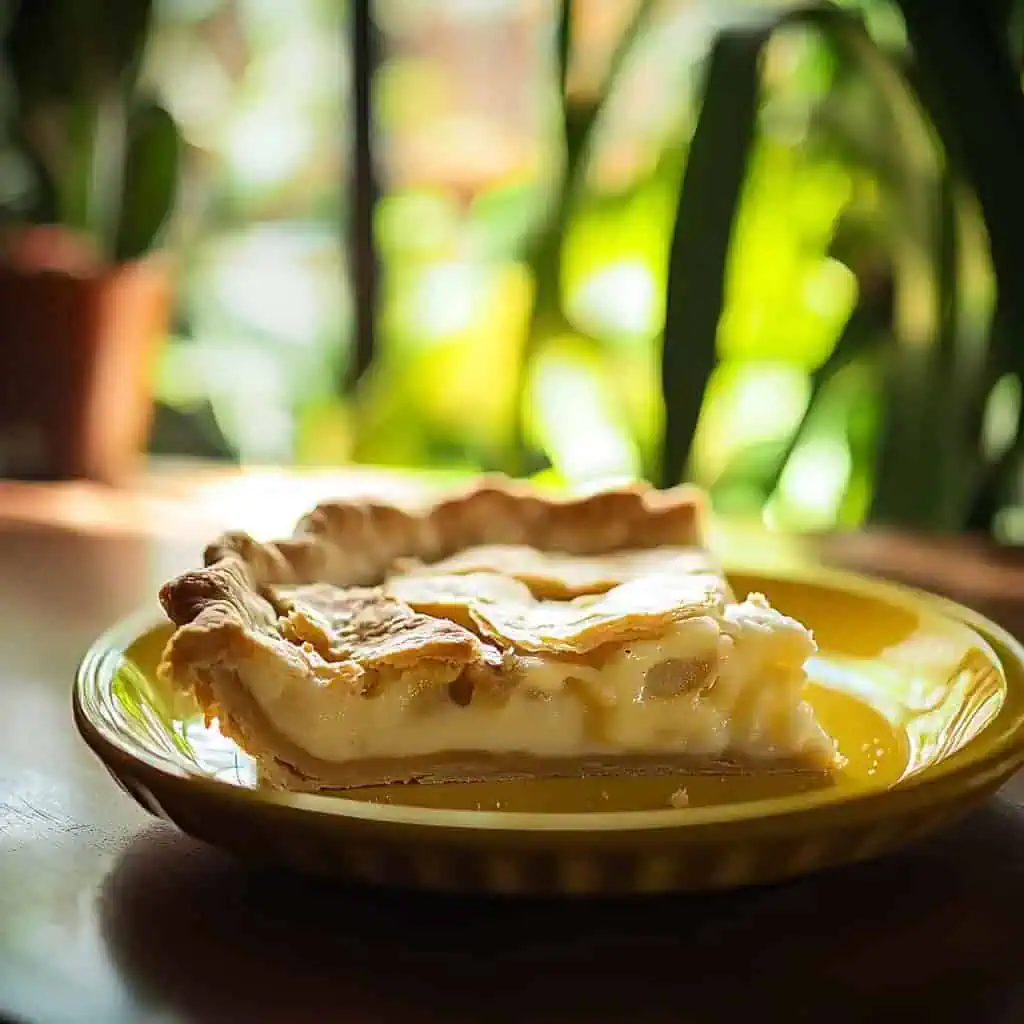
How To Make
- Prepare your vegan pie crust. In a food processor, combine 2½ cups flour, 1 tablespoon sugar, and 1 teaspoon salt with a few pulses. Add ¾ cup cold cubed vegan butter and pulse until the mixture resembles coarse crumbs. Mix ⅓ cup ice water with 1 tablespoon apple cider vinegar, then slowly add to the processor while running until the dough forms. Divide into two discs, wrap, and refrigerate for at least 1 hour.
- Prepare the filling. Carefully open 2 young coconuts, straining the juice into a measuring cup. Scoop out the meat and cut into ½-inch pieces. Combine 1½ cups coconut juice with 1 tablespoon vanilla paste and optional 3 tablespoons sugar in a saucepan. Whisk 4 tablespoons arrowroot powder with 3 tablespoons water to make a slurry. Heat the coconut juice mixture over medium-low heat, then slowly whisk in the arrowroot slurry. Cook for 10-15 minutes, stirring frequently, until very thick. Remove from heat, stir in ¼ teaspoon salt, and cool for 15 minutes before folding in the coconut meat pieces. Let cool completely.
- Assemble and bake the pie. Preheat your oven to 350°F. Roll out one disc of dough to ⅛-inch thickness and transfer to a 9-inch pie dish. Pour in the cooled filling. Roll out the second disc and place on top. Trim excess dough, leaving a 1-inch overhang, then fold and crimp the edges. Cut several small slits in the top crust for steam to escape. Mix 2 tablespoons almond milk with 1 tablespoon maple syrup and brush over the top crust. Place the pie in the freezer for 15-20 minutes, then bake for 30-35 minutes until golden brown and the filling is bubbling. Let cool completely for 3-4 hours before slicing to ensure the filling sets properly.

Tips from Lola's Kitchen
- Coconut Selection: Look for young coconuts with a slightly yellowish hue rather than bright white, as they tend to have more flavorful meat.
- Check Freshness: When selecting coconuts, shake them - you should hear liquid sloshing inside. The exterior should be free from mold or strong off-odors.
- Chill All Ingredients: Keep your vegan butter and water ice-cold for the flakiest crust possible. Some bakers even chill their flour!
- Perfect Filling Consistency: The filling should coat the back of a spoon before adding the coconut meat. If it seems too thin, cook it a bit longer.
- Dough Handling: Work quickly and handle the dough as little as possible to prevent the butter from melting, which ensures flakiness.
- Crust Protection: If the edges of your crust are browning too quickly, cover them with foil while the center continues to bake.
- Patience Pays Off: The hardest part is waiting for it to cool completely, but this step is crucial for a clean slice and perfect texture.
- Crimping Technique: Dip your fork in flour before crimping the edges to prevent sticking.
Substitutions
- Young Coconuts: If fresh young coconuts are unavailable, check Asian grocery stores for frozen young coconut meat and juice. You'll need about 2 cups of meat and 1½ cups of juice.
- Arrowroot Powder: Substitute with cornstarch or tapioca starch in equal amounts. Arrowroot creates a clearer, more glossy filling than cornstarch and works better with acidic ingredients.
- Vanilla Paste: Replace with vanilla extract (1½ teaspoons) or the seeds from one vanilla bean.
- Vegan Butter: Coconut oil (solid, not melted) works well as a substitute, though the flavor will be more pronounced.
- Almond Milk: Any plant-based milk will work for the glaze; oat milk gives a nice golden color.
- Maple Syrup: Agave nectar or a simple syrup made with organic sugar can be used for the glaze.
- All-Purpose Flour: For a gluten-free version, substitute with a 1:1 gluten-free baking flour blend. Add ½ teaspoon of xanthan gum if your blend doesn't already include it.
Troubleshooting
- Soggy Bottom Crust: Blind bake the bottom crust for 10 minutes at 350°F before adding the filling. Use pie weights to prevent puffing.
- Filling Too Runny: Ensure you cook the filling until very thick, as it will loosen slightly when the coconut meat is added. If still too runny, combine 1 teaspoon arrowroot with 1 tablespoon cold water and stir into the warm filling.
- Filling Too Thick: Add a tablespoon of coconut juice at a time until you reach the desired consistency.
- Crust Shrinking: Make sure to chill the dough thoroughly before baking and consider using pie weights during blind baking.
- Tough Crust: Avoid overworking the dough; stop processing as soon as it comes together.
- Coconut Meat Discoloration: A slight pinkish hue in coconut meat is natural and safe. If it's brown, however, the coconut may be spoiled.
- Uneven Browning: Rotate your pie halfway through baking to ensure even heat distribution.
- Filling Bubbles Over: Place a baking sheet under the pie dish to catch any potential overflow.
Storage & Reheating
- Refrigeration: Store covered in the refrigerator for up to 4 days.
- Freezing Unbaked: The assembled, unbaked pie can be frozen for up to 3 months. Wrap tightly in plastic wrap and aluminum foil. Bake directly from frozen, adding 10-15 minutes to the baking time.
- Freezing Baked: Baked and cooled pie can be frozen for up to 2 months. Thaw overnight in the refrigerator.
- Reheating: Warm individual slices in a 300°F oven for 10 minutes or until just warmed through. Avoid microwave reheating as it can make the crust soggy.
- Serving from Refrigerator: For best flavor, let refrigerated slices come to room temperature for about 30 minutes before serving.
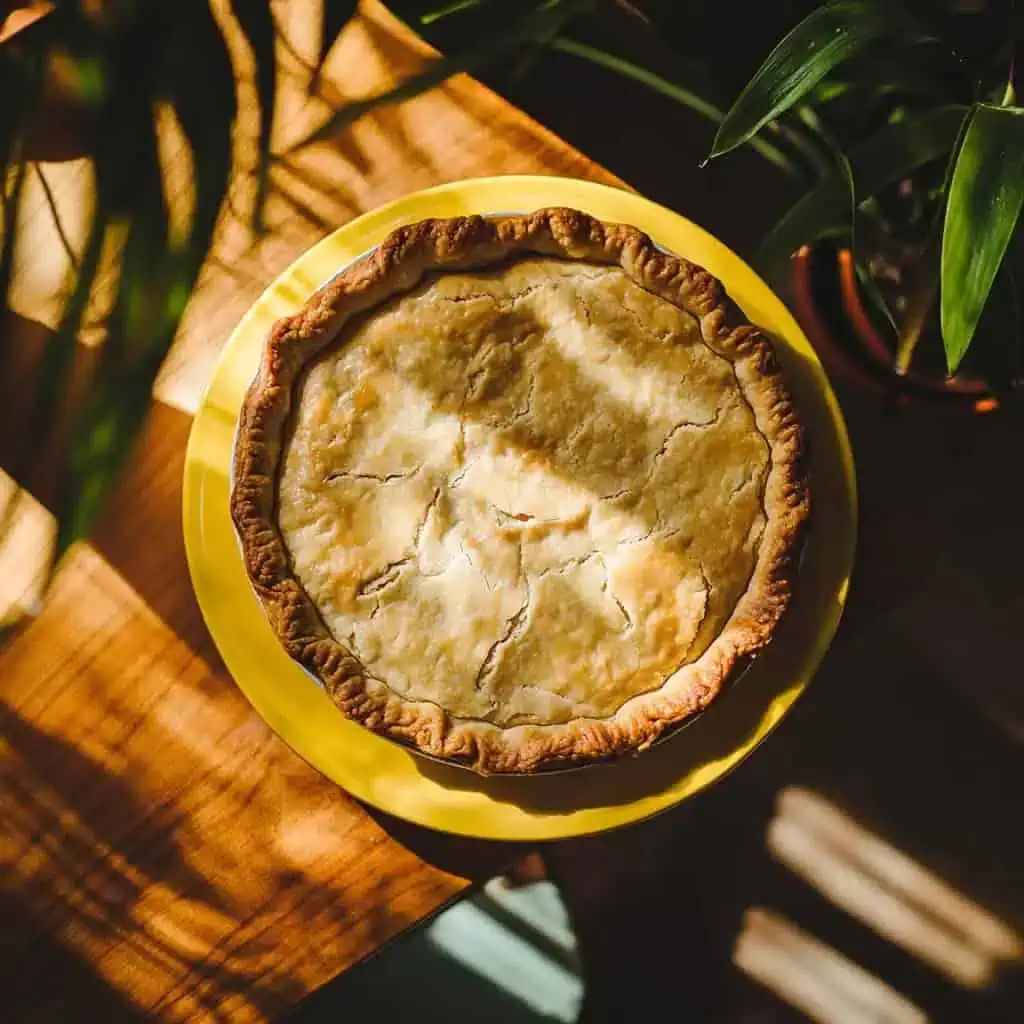
FAQ
Can I use mature coconut instead of young coconut?
While technically possible, mature coconut has a different texture and flavor profile. The pie won't have the same delicate sweetness and tender texture that makes traditional Buko Pie special.
Why does my filling need to cool before adding the coconut meat?
Adding the coconut meat while the filling is too hot can cause it to shrink and toughen. Cooling the filling preserves the tender texture of the young coconut.
How do I know when my pie is done baking?
The crust should be golden brown, and you should see small bubbles of filling simmering through the vents in the top crust. The internal temperature should reach about 175°F.
Can I reduce the sugar in this recipe?
Absolutely! The natural sweetness of young coconut means this pie doesn't require much added sugar. You can reduce or eliminate the sugar based on your preference and the sweetness of your coconuts.
How do I safely open a young coconut?
Place the coconut on a stable surface. Using a heavy chef's knife, carefully make several chops around the pointed top until you can pry it open. Always cut away from your body and use caution.
Can I make mini pies instead of one large pie?
Yes! This recipe works beautifully for 6-8 mini pies. Reduce the baking time to about 20-25 minutes and check frequently to prevent over-browning.
Why did my arrowroot filling get stringy?
Arrowroot can develop a stringy texture if overcooked or heated too aggressively. Cook on medium-low heat and remove from heat once thickened.
Is there a way to make this pie lower in fat?
While the vegan butter is important for a flaky crust, you can reduce it by 2-3 tablespoons and slightly increase the water. The texture will be different but still enjoyable.
Related
Looking for other recipes like this? Try these:

Authentic Vegan Buko Pie
Equipment
- Food processor For quickly mixing the pie dough with minimal handling
- Rolling Pin Essential for achieving an even thickness in your pie crust
- 9-inch Pie Dish The perfect size for this recipe (can also use 4-inch mini pie dishes for individual servings)
- Medium saucepan For cooking the filling to the right consistency
- Silicone Spatula Helps prevent the filling from sticking and burning while cooking
- Whisk For ensuring the arrowroot powder blends smoothly without lumps
- Pastry brush For applying the glaze evenly across the top crust
- Sharp Chef's Knife For opening the young coconuts safely
- Coconut Tool or Spoon For scooping out the coconut meat cleanly
- Strainer To ensure your coconut juice is free from shell fragments
Ingredients
For the Filling:
- 2 whole young coconuts yielding approximately 2 cups of meat and 1½ cups of juice
- 4 tablespoons arrowroot powder
- 1 tablespoon vanilla paste or 1½ teaspoons pure vanilla extract
- 3 tablespoons organic cane sugar optional, adjust to taste
- ¼ teaspoon sea salt
For the Vegan Pie Crust:
- 2½ cups all-purpose flour
- 1 tablespoon organic cane sugar
- 1 teaspoon salt
- ¾ cup cold vegan butter cubed
- ⅓ cup ice-cold water
- 1 tablespoon apple cider vinegar
For the Glaze:
- 2 tablespoons unsweetened almond milk
- 1 tablespoon maple syrup
Instructions
- First, prepare your vegan pie crust. In a food processor, combine 2½ cups flour, 1 tablespoon sugar, and 1 teaspoon salt with a few pulses. Add ¾ cup cold cubed vegan butter and pulse until the mixture resembles coarse crumbs. Mix ⅓ cup ice water with 1 tablespoon apple cider vinegar, then slowly add to the processor while running until the dough forms. Divide into two discs, wrap, and refrigerate for at least 1 hour.
- For the filling, carefully open 2 young coconuts, straining the juice into a measuring cup. Scoop out the meat and cut into ½-inch pieces. Combine 1½ cups coconut juice with 1 tablespoon vanilla paste and optional 3 tablespoons sugar in a saucepan. Whisk 4 tablespoons arrowroot powder with 3 tablespoons water to make a slurry. Heat the coconut juice mixture over medium-low heat, then slowly whisk in the arrowroot slurry. Cook for 10-15 minutes, stirring frequently, until very thick. Remove from heat, stir in ¼ teaspoon salt, and cool for 15 minutes before folding in the coconut meat pieces. Let cool completely.
- Preheat your oven to 350°F. Roll out one disc of dough to ⅛-inch thickness and transfer to a 9-inch pie dish. Pour in the cooled filling. Roll out the second disc and place on top. Trim excess dough, leaving a 1-inch overhang, then fold and crimp the edges. Cut several small slits in the top crust for steam to escape. Mix 2 tablespoons almond milk with 1 tablespoon maple syrup and brush over the top crust. Place the pie in the freezer for 15-20 minutes, then bake for 30-35 minutes until golden brown and the filling is bubbling. Let cool completely for 3-4 hours before slicing to ensure the filling sets properly.
Tips from Lola's Kitchen
- Coconut Selection: Look for young coconuts with a slightly yellowish hue rather than bright white, as they tend to have more flavorful meat.
- Arrowroot vs. Cornstarch: Arrowroot creates a clearer, more glossy filling than cornstarch and works better with acidic ingredients. If substituting cornstarch, use the same amount but expect a slightly different appearance.
- Crust Protection: If the edges of your crust are browning too quickly, cover them with foil while the center continues to bake.
- Cold Ingredients: Keep your vegan butter and water ice-cold for the flakiest crust possible. Some bakers even chill their flour!
- Filling Consistency: The filling should coat the back of a spoon before adding the coconut meat. If it seems too thin, cook it a bit longer.
- Perfect Crimping: Dip your fork in flour before crimping the edges to prevent sticking.
- Rest Period: The hardest part of this recipe is waiting for it to cool completely, but this step is crucial for a clean slice and perfect texture.
Nutrition
The Story Behind Buko Pie
Buko Pie stands as one of the Philippines' most treasured desserts, with a history as rich and vibrant as its flavor. This beloved Filipino coconut pie originated in the province of Laguna, a region south of Manila blessed with an abundance of coconut trees that stretch as far as the eye can see.
In the 1960s, the enterprising locals of Los Baños, Laguna, created something special that would soon become synonymous with their province. After observing American apple pies, they ingeniously substituted the apples with something they had in abundance – young coconuts, known locally as "buko." This resourceful adaptation showcased Filipino creativity and gave birth to what is now considered a national dessert treasure.
The original creators of this delicacy were the Pahud sisters, who established the now-famous Orient The Original Buko Pie bakery. What began as a small home-based business quickly gained popularity as travelers passing through Laguna on their way to and from Manila would stop specifically to purchase these pies as "pasalubong" (homecoming gifts) for their families.
Unlike Western coconut cream pies that use sweetened shredded coconut, Buko Pie celebrates the pure essence of young coconut. The filling features tender chunks of fresh buko meat suspended in a custard made from the coconut's own juice, creating a dessert that's refreshingly light yet satisfying. The simplicity of the ingredients allows the natural sweetness and delicate flavor of the young coconut to truly shine.
Today, a trip to Laguna isn't complete without stopping by one of the many bakeries lining the highways, where the enticing aroma of freshly baked Buko Pies fills the air. What makes this dessert particularly special is that each family bakery guards their own secret recipe, resulting in subtle variations that keep pie enthusiasts returning to sample different versions.
This vegan adaptation maintains the authentic flavors and textures of traditional Buko Pie while making it accessible to those following plant-based diets. By using arrowroot powder instead of eggs for thickening and vegan butter for the crust, this recipe preserves the cultural significance of the dish while embracing modern dietary preferences.
Buko Pie embodies the Filipino value of "diskarte" – resourcefulness and creativity in making something extraordinary from simple, available ingredients. More than just a dessert, it represents cultural identity, family tradition, and the warm hospitality that Filipinos are known for worldwide.
Whether you're a homesick Filipino craving a taste of home, a culinary explorer seeking authentic global flavors, or someone looking for a delightful vegan dessert option, this Buko Pie recipe offers a genuine connection to Filipino food heritage and the lush coconut groves of Laguna.


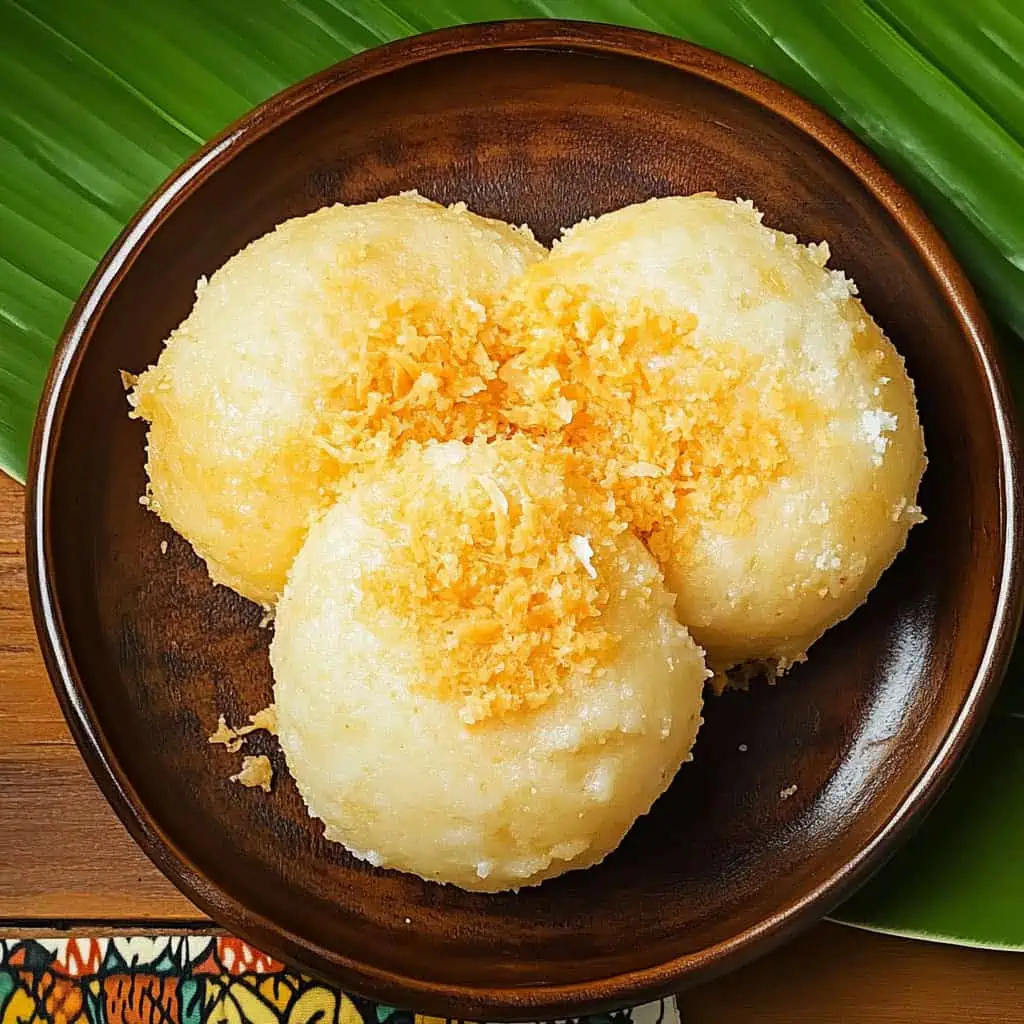
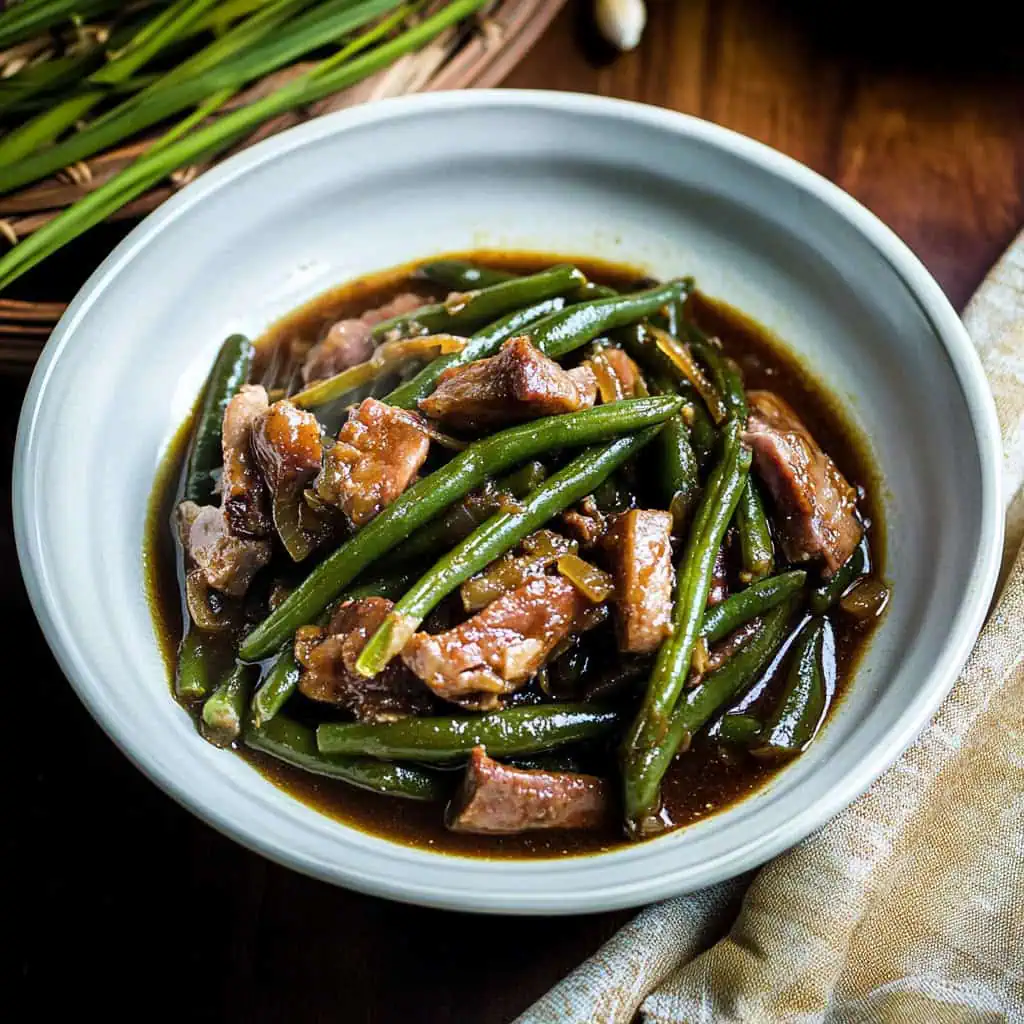

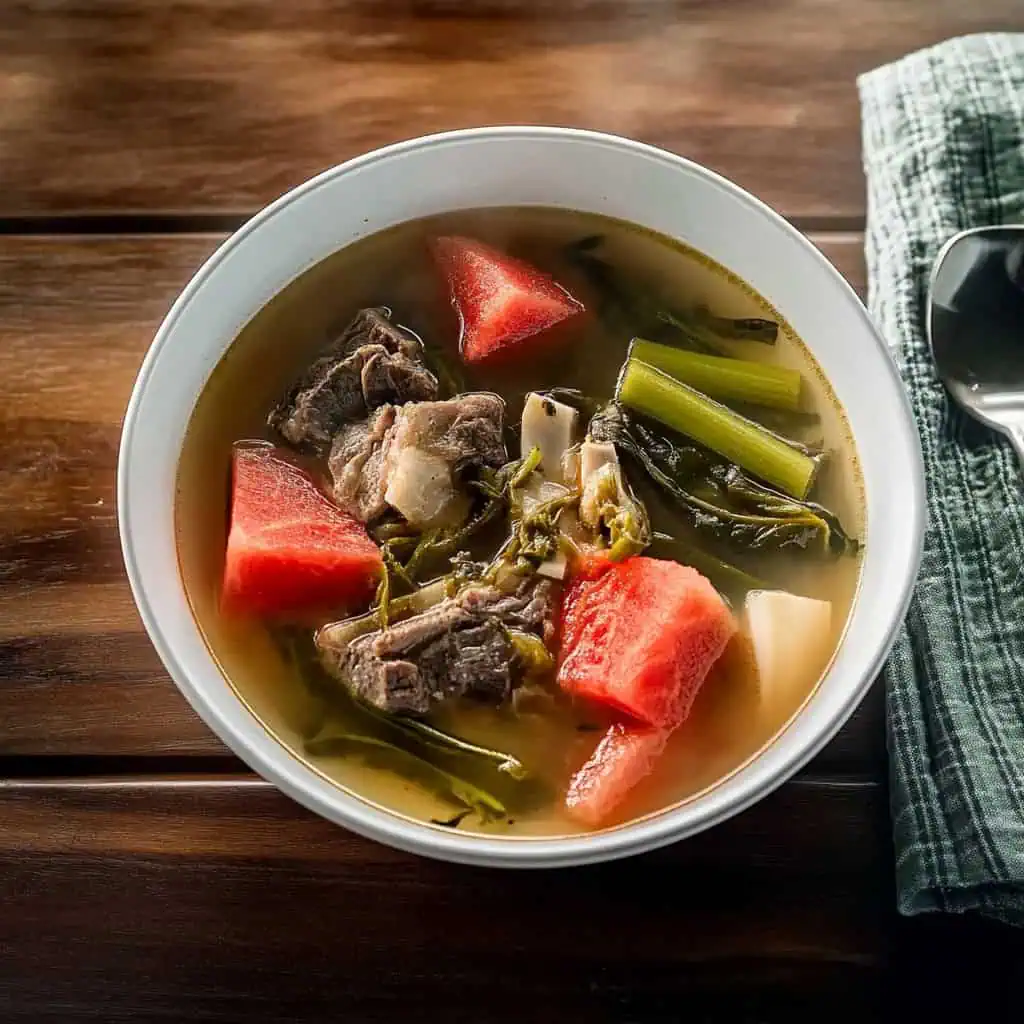


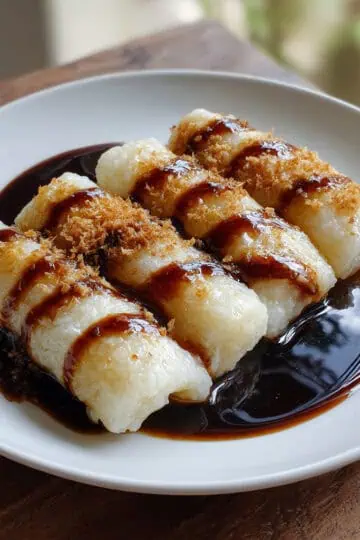
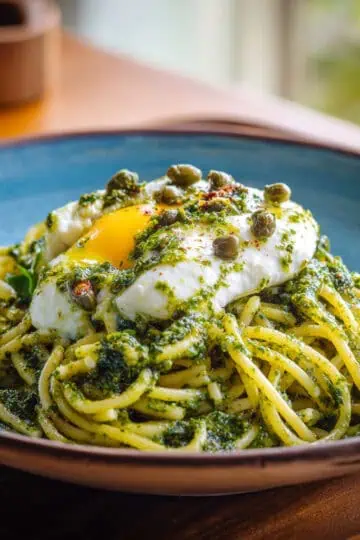
Comments
No Comments